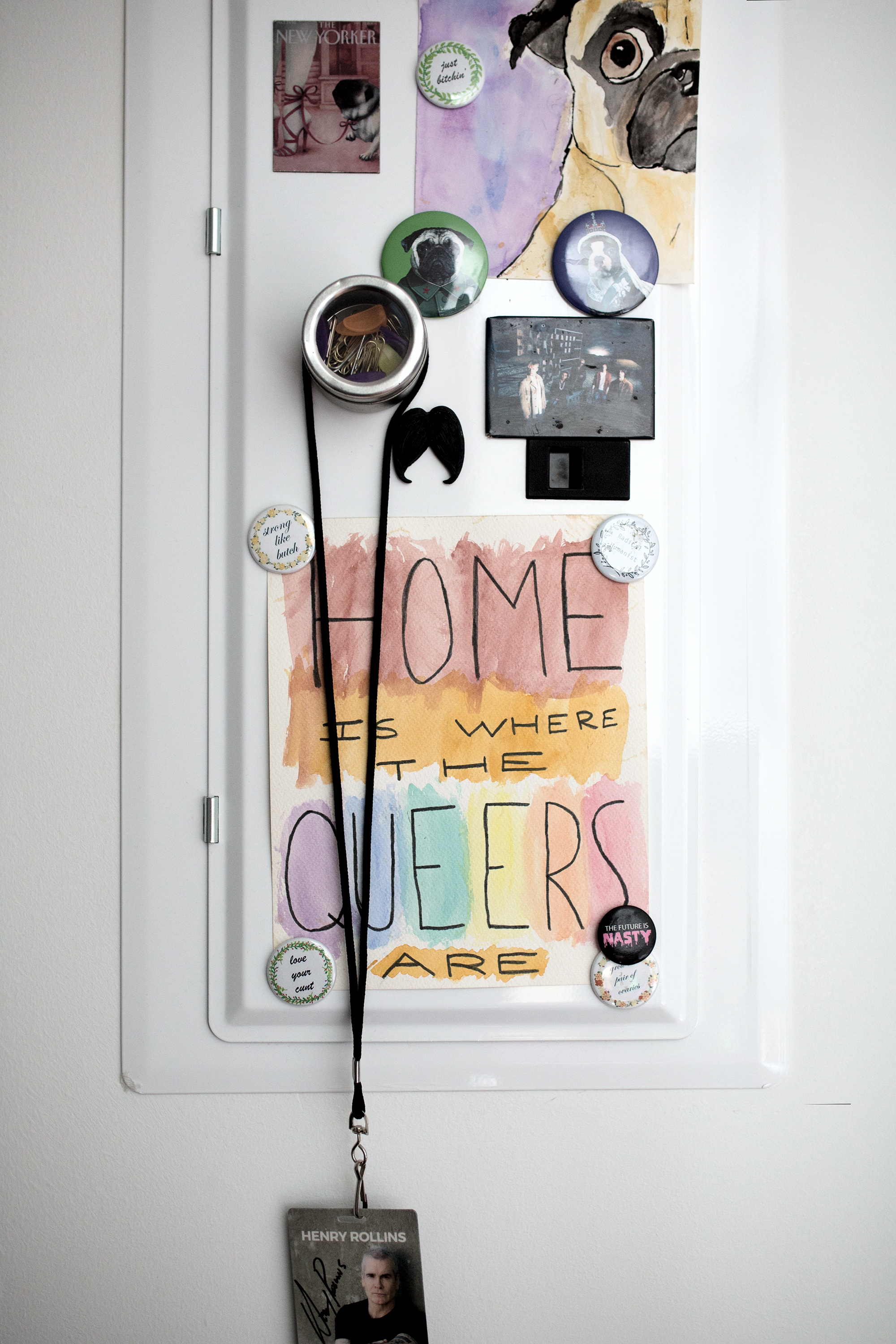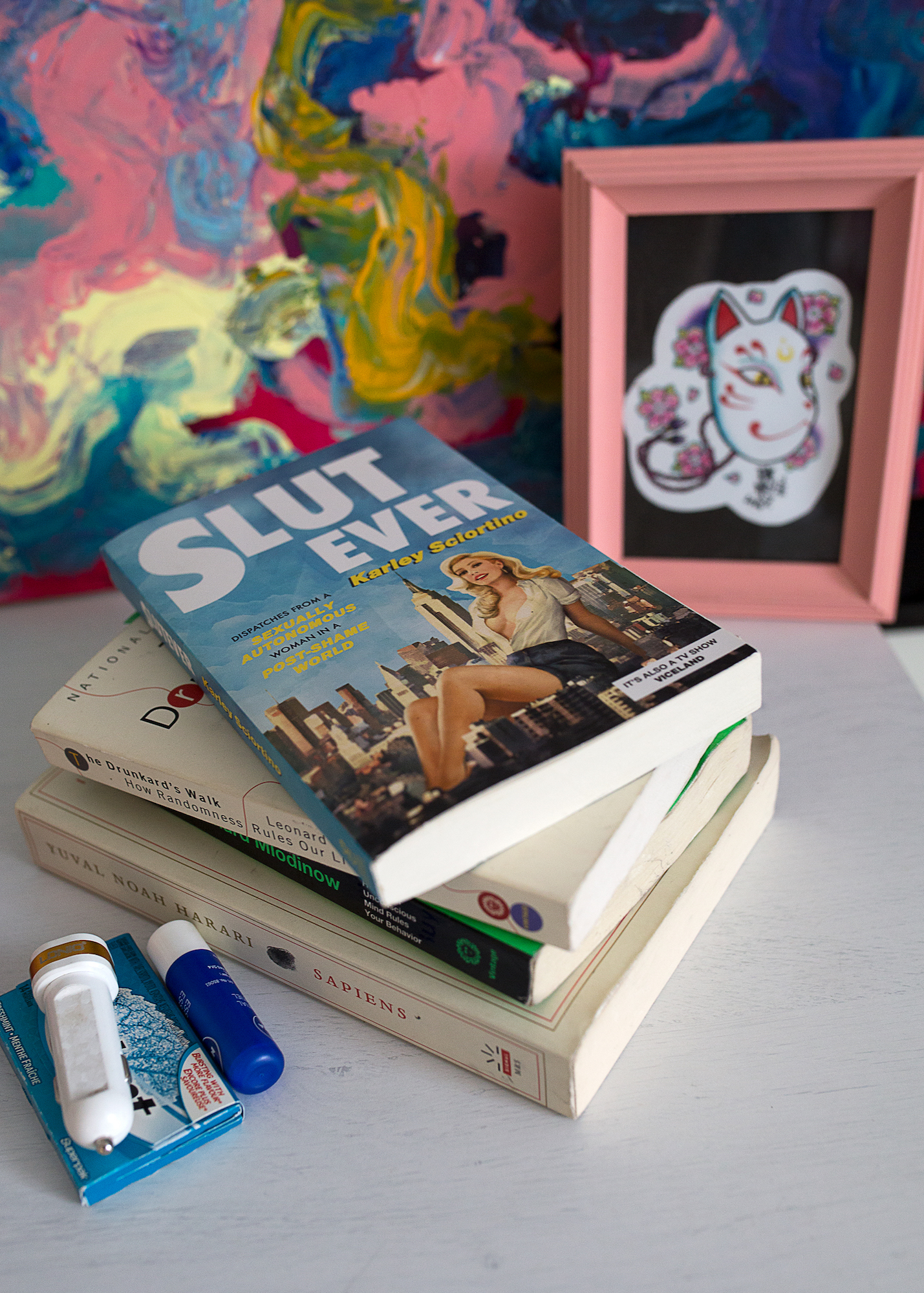This article originally appeared on VICE Canada.
Lindsay Irene is a photographer who has spent the past few months shooting subjects for her personal project, The Home Lives of Sex Workers in Canada. Though she works as a sex work photographer creating images for online advertisements, Lindsay wanted to show a different side to the industry: The reality that sex workers are everyday people.
We recently had the chance to document Lindsay, who is 32, as she went on a few photo shoots with sex workers in our documentary, The Home Lives of Sex Workers.
Videos by VICE
In the documentary, you’ll get an intimate glimpse at sex workers’ personal lives and living environments. This photo essay includes shots Lindsay has taken from her travels across Canada when invited into the homes of sex workers.
“One of my subjects told me that she had ‘Easter eggs’ all over her place—little things that were given to her by clients like comic books and things found at a beach. It was really cute,” Lindsay explained.

VICE: Our original interview with you about your project and the documentary focused more on portraits and the theme of being “out” as a sex worker. How do these detail shots in sex worker homes vary from the portraits?
Lindsay Irene: When I’m shooting with them in their homes, at first glance, these just look like any other places. It’s when you zoom in on the details that you can really tell more about their personalities. I was able to find a lot of shots of either books on sex work, or sex toys that are sometimes hidden or hidden in plain sight. When you look at the details, you can tell that a lot of the sex workers are socially conscious: They are promoting LGBTQ rights with posters or pins and have books on sex work. There’s actually a book in one by Karley from Slutever, which one of the sex workers had that sitting on her shelf. It’s the cute little details that give a hint that they’re into sex work.
Why is the Hitachi [vibrator] shot so significant?
I think almost every sex worker you’ve ever met always has a Hitachi and most likely it’s plugged in and ready to go on their nightstand. There have been several instances where I’ve walked in, and there’s this big, glorious Hitachi sitting in plain sight. I definitely wanted to capture that. It’s this iconic symbol of sex work.

Traveling to different Canadian cities, do you notice anything different about sex workers in one urban center versus another?
Yeah, definitely. I found in some cities, the more resources they had, the more a sense of community they had. In places like Vancouver, I got some help from PACE Society. From talking to the workers they connected me with, they seem like they’re very community-oriented. They’re working very hard on sex worker rights, and they’re working with local police to keep everyone safe. They actually have a good relationship with law enforcement there, which I haven’t seen in any other city to that degree. There are other cities where there wasn’t as much of a sense of community—some of the people I talked to talked about feeling more isolated. I don’t know if has to do with the location itself or the people who live there, but there was a definite noted difference between each city and how connected the sex workers felt with each other.
What is going on in this image with the little phallic objects on a shelf?
There is a ten-sided die in it sitting next to miniature penises, then it’s sitting next to these stone angels and ghoulish figurines [for tabletop gaming]. Obviously, this person is really into fantasy and really into sex. It’s really cute to see these tiny little trinkets on this shelf that really show how well-rounded this person is and how varied their tastes are.
Being in some sex workers’ homes, it totally seems like some tend to be into “nerdy” stuff.
Oh yeah, one of the sex worker’s final portraits is going to be of her playing video games. She has anime stuff on shelves and piles of video games everywhere. But she’s also an artist and into fashion design.
Another person, they had this interesting room… They’re not showing their face until the project comes out [in its final form]. You go into their play space, and there’s this giant wooden contraption you can tie people to and a medical station with medical supplies inside. Then you see this entire wall of latex gags and masks. It was really cool. If you open up this cabinet, there’s just this wall of dildos and vibrators. But when you close it, it’s more inconspicuous.

Some of their homes, you wouldn’t necessarily be able to see details that tell you they’re into sex work, right?
That’s the thing. Some of the places I went to, it just looks like it could be your mom’s place: fitness equipment, cats, cat trees, cute art on the walls. You would never know that person is a sex worker. But then sometimes you go in, and they have a dungeon. It just speaks to how different we are as people in society. Some are more overtly sexual than others, but that doesn’t make them less of a sex worker.
Tell me about the recent trip you went on for The Home Lives of Sex Workers in Canada project.
It was a whirlwind. I only had one week to do it: I was able to raise money through a Kickstarter, and a lot of generous people were able to support me with it. I visited four cities: I did Winnipeg, Calgary, Vancouver, and Halifax all in one week. It took a lot of planning to be able to have contact info for all the sex workers that I did. In the end, it was challenging. Some people just straight-up flaked on me. But there were some people who backed out for personal reasons, which I absolutely respect because it’s such a big deal putting yourself out there. I allow people to back out… I don’t want anyone to feel like I’m pressuring them to participate.
It was really hard trying to scramble to find other people to participate last minute when I’m only there for a day or a day and a half. Other than that, it was really rewarding. It’s one thing talking to sex workers online; it’s another thing going to see their cities, visit their homes, and getting a firsthand account of what it’s like to be a sex worker in that city.

Do you have any other cities you really want to go to for the project?
I shot in Montreal, and I am planning on going back. I’m going to wait until later in the fall since I am focusing on school right now. I do have lots of people lined up for Toronto and Montreal, as well as one person in Quebec City. I just need to earn some money too before I can make more trips. I am really excited to get back out there and meet everyone. There’s a lot of fantastic sex workers I have lined up to shoot.
What’s the next phase of your project?
My goal is for it to be a photo book, but also perhaps an art exhibition. It’s just going to come down to curating these images. Obviously, not every image is going to make the cut. I have so many that are adding up. I’ve shot dozens of sex workers [for this photo project]. It’s going to be a matter of going through those and picking which ones I feel really represent the industry.
This interview has been edited for length and clarity.
Sign up for our newsletter to get the best of VICE delivered to your inbox daily.
More
From VICE
-

Screenshot: Warner Bros. Games -

Collage by VICE -

Collage by VICE -

Collage by VICE
